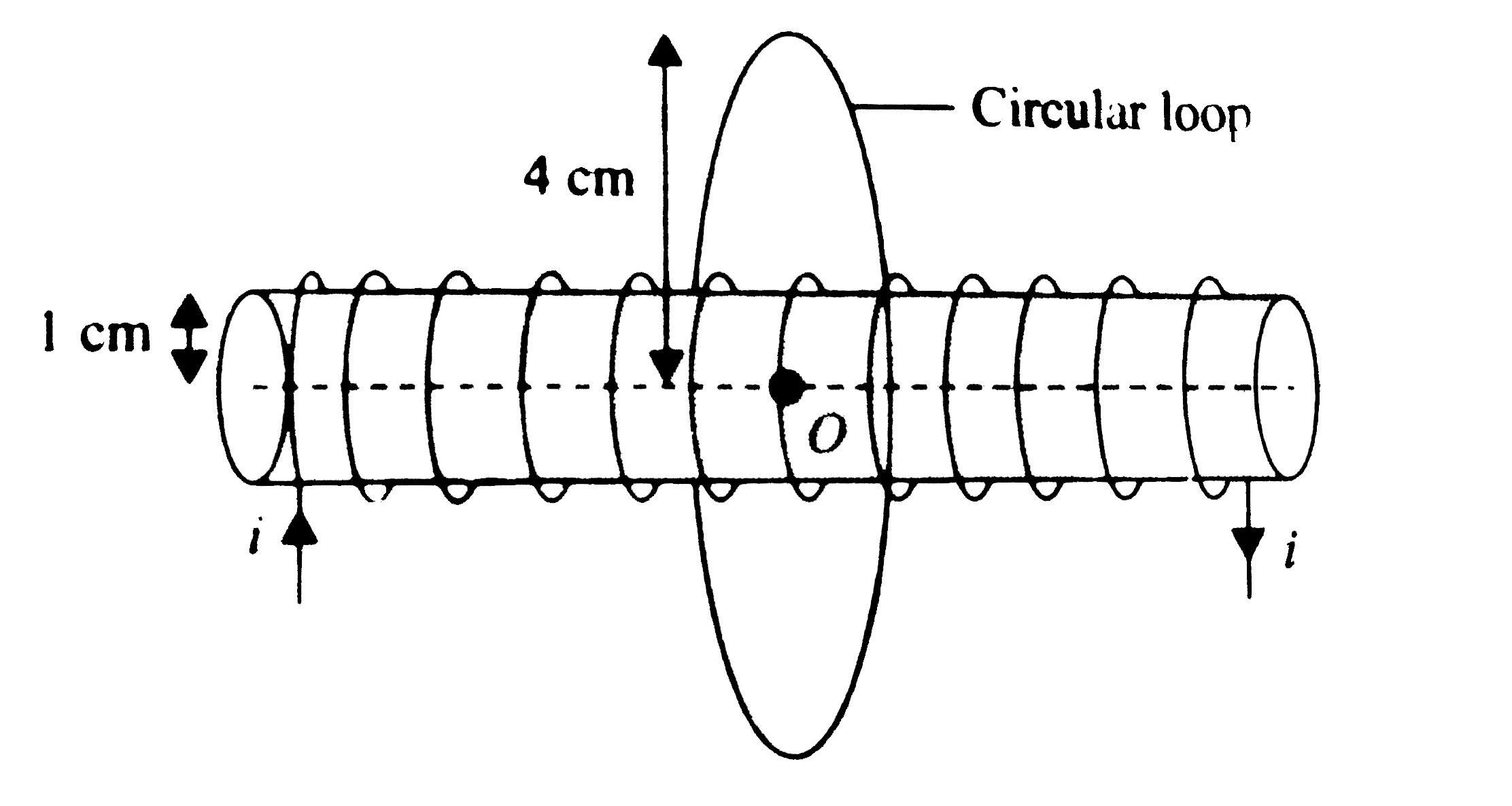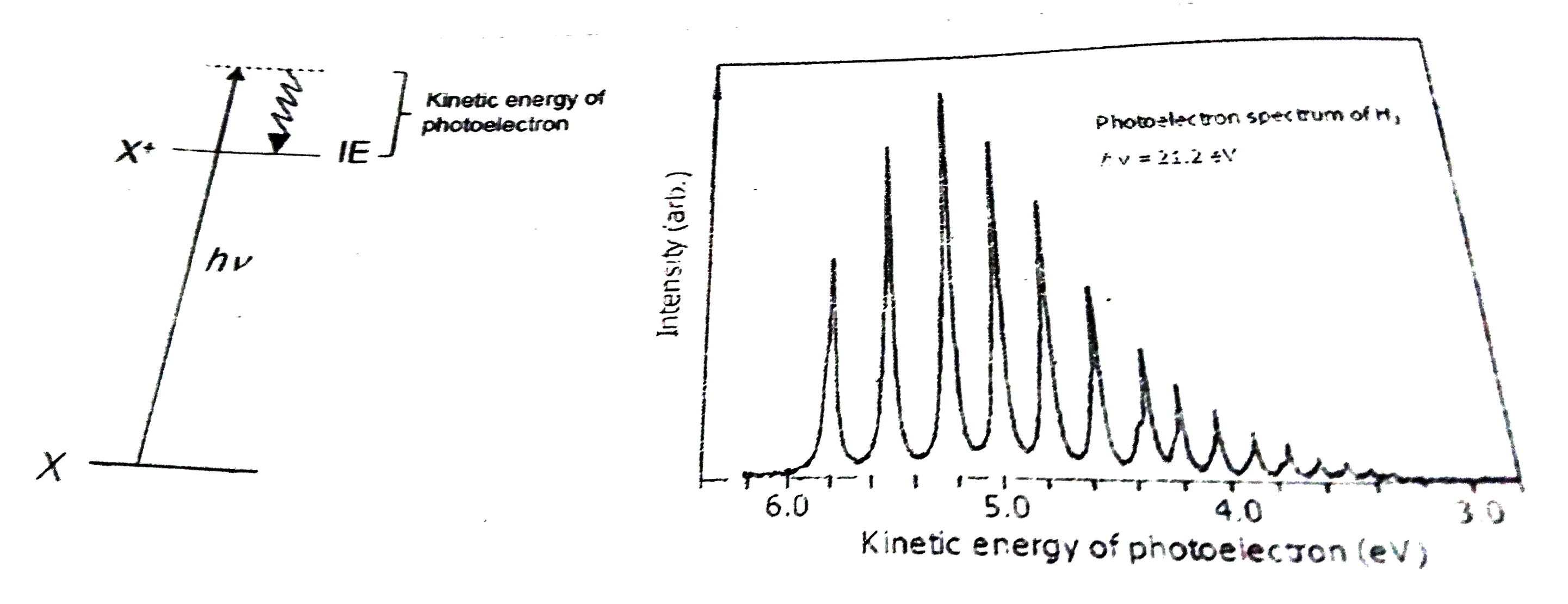A photo - cell is being operated in saturation mode . Electromagnetic radiations of wavelength λ m fall upon the photo - cell . The corresponding spectral sensitivity of photocell is JAW−1 . The number of photo - electrons produced by each incident photon, is
hc2eλJ
hceλ
hceλ
2hceλJ
The correct Answer is:B
To solve the problem of finding the number of photoelectrons produced by each incident photon in a photocell operating in saturation mode, we can follow these steps:
1. Understand the Energy of a Photon:
The energy E of a single photon can be calculated using the formula:
E=hcλ
where:
- h is Planck's constant (6.626×10−34Js),
- c is the speed of light (3×108m/s),
- λ is the wavelength of the radiation.
2. Define Spectral Sensitivity:
The spectral sensitivity J of the photocell is given in units of A/W (amperes per watt). This represents the current produced per unit power of incident light.
3. Relate Current to Photoelectrons:
The current I produced by the photocell can be expressed as:
I=Ne⋅e
where:
- Ne is the number of photoelectrons produced per second,
- e is the charge of an electron (1.6×10−19C).
4. Power of Incident Photons:
The power P of the incident photons can be expressed as:
P=Np⋅E
where:
- Np is the number of incident photons per second,
- E is the energy of one photon.
5. Relate Current to Power:
From the definition of spectral sensitivity, we have:
J=IP
Substituting the expressions for I and P:
J=Ne⋅eNp⋅hcλ
6. Rearranging for Ne:
We want to find the number of photoelectrons produced per incident photon, which is NeNp. Rearranging the equation gives:
NeNp=J⋅hcλe
7. Final Expression:
Thus, the number of photoelectrons produced by each incident photon is given by:
NeNp=hc⋅Jλ⋅e
Final Answer:
The number of photoelectrons produced by each incident photon is:
NeNp=hc⋅Jλ⋅e
The energy E of a single photon can be calculated using the formula:
E=hcλ
where:
- h is Planck's constant (6.626×10−34Js),
- c is the speed of light (3×108m/s),
- λ is the wavelength of the radiation.
The spectral sensitivity J of the photocell is given in units of A/W (amperes per watt). This represents the current produced per unit power of incident light.
The current I produced by the photocell can be expressed as:
I=Ne⋅e
where:
- Ne is the number of photoelectrons produced per second,
- e is the charge of an electron (1.6×10−19C).
The power P of the incident photons can be expressed as:
P=Np⋅E
where:
- Np is the number of incident photons per second,
- E is the energy of one photon.
From the definition of spectral sensitivity, we have:
J=IP
Substituting the expressions for I and P:
J=Ne⋅eNp⋅hcλ
We want to find the number of photoelectrons produced per incident photon, which is NeNp. Rearranging the equation gives:
NeNp=J⋅hcλe
Thus, the number of photoelectrons produced by each incident photon is given by:
NeNp=hc⋅Jλ⋅e
The number of photoelectrons produced by each incident photon is:
NeNp=hc⋅Jλ⋅e
Similar Questions
A photocell is operating in saturation mode with a photocurrent 4.8 mA when a monochromatic radiation of wavelength 3000Åand power of 1wM is incident. When another monochromatic radiation of wavelength 1650Å and power 5wM is indcident, it is observed that maximum velocity of photoelectron increases to two times. Assuming efficiency of photoelectron generation per incident photon to be same for both the cases, calculate.
(a) the threshold wavelength for the cell
(b) the saturation current in second case
(c ) the efficiency of photoelectron generation per incident photon.
View SolutionA long solenoid having n = 200 turns per metre has a circular cross-section of radius a1=1cm. A circular conducting loop of radius a2=4cm and resistance R=5(Ω) encircles the solenoid such that the centre of circular loop coincides with the midpoint of the axial line of the solenoid and they have the same axis as shown in Fig.

A current 't' in the solenoid results in magnetic field along its axis with magnitude B=(μ)ni at points well inside the solenoid on its axis. We can neglect the insignificant field outside the solenoid. This results in a magnetic flux (ϕ)B through the circular loop. If the current in the winding of solenoid is changed, it will also change the magnetic field B=(μ)0ni and hence also the magnetic flux through the circular loop. Obvisouly, it will result in an induced emf or induced electric field in the circular loop and an induced current will appear in the loop. Let current in the winding of solenoid be reduced at a rate of 75A/sec.
When the current in the solenoid becomes zero so that external magnetic field for the loop stops changing, current in the loop will follow a differenctial equation given by [You may use an approximation that field at all points in the area of loop is the same as at the centre
View SolutionA photo cell is illuminated by a small bright source placed 1m away When the same source of light is placed 2m away, the electrons emitted by photo cathode
View SolutionWhen light of sufficiently high frequency is incident on a metallic surface, electrons are emitted from the metallic surface. This phenomenon is called photoelectric emission. Kinetic energy of the emitted photoelectrons depends on the wavelength of incident light and is independent of the intensity of light. Number of emitted photoelectrons depends on intensity. (hv−ϕ) is the maximum kinetic energy of emitted photoelectron (where ϕ is the work function of metallic surface). Reverse effect of photo emission produces X-ray. X-ray is not deflected by electric and magnetic fields. Wavelength of a continuous X-ray depends on potential difference across the tuve. Wavelength of charasteristic X-ray depends on the atomic number.
Q. If potential difference across the tube is increased then
View SolutionWhen electromagnetic radiaiton of wavelength 300nm falls on the surface of sodium electrons are emitted with a kinetic enegry of 1.68×105Jmol−. What is the minimum enegry needed to remove an electorn from sodium?
Strategy: The minimum enegry required to remove an electron from target metal is called work function W0 of the metal. It can be calculated from Eq., provided we know the energy of the incident photon and kinetic enegry of a single photoelectorn.
View SolutionWhen light of sufficiently high frequency is incident on a metallic surface, electrons are emitted from the metallic surface. This phenomenon is called photoelectric emission. Kinetic energy of the emitted photoelectrons depends on the wavelength of incident light and is independent of the intensity of light. Number of emitted photoelectrons depends on intensity. (hv−ϕ) is the maximum kinetic energy of emitted photoelectron (where ϕ is the work function of metallic surface). Reverse effect of photo emission produces X-ray. X-ray is not deflected by electric and magnetic fields. Wavelength of a continuous X-ray depends on potential difference across the tuve. Wavelength of charasteristic X-ray depends on the atomic number.
Q. If frequency (υ>υ0) of incident light becomes n times the initial frequency (v), then KE of the emitted photoelectrons becomes (v0 threshold frequency).
View SolutionWhen light of sufficiently high frequency is incident on a metallic surface, electrons are emitted from the metallic surface. This phenomenon is called photoelectric emission. Kinetic energy of the emitted photoelectrons depends on the wavelength of incident light and is independent of the intensity of light. Number of emitted photoelectrons depends on intensity. (hv−ϕ) is the maximum kinetic energy of emitted photoelectron (where ϕ is the work function of metallic surface). Reverse effect of photo emission produces X-ray. X-ray is not deflected by electric and magnetic fields. Wavelength of a continuous X-ray depends on potential difference across the tuve. Wavelength of charasteristic X-ray depends on the atomic number.
Q. A monochromatic light is used in a photoelectric experiment on photoelectric effect. The stopping potential
View SolutionWhen an atom X absorbs radiation with a photon energy than the ionization energy of the atom, the atom is ionized to generate an ion X+ and the electron (called a photoelectron) is ejected at the same time. In this event, the energy is conserved as shown in Figure 1, that is,
Photon energy (h)=ionization energy (IE) of X+ kinetic energy of photoelectron.
When a molecule, for example, H2, absorbs short-wavelength light, the photoelectron is ejected and an H2, ion with a variety of vibrational states is produced. A photoelectron spectrum is a plot of the number of photoelectrons as a function of the kinetic energy of the photoelectrons. Figure-2 shows a typical photoelectron spectrum when H2 in the lowest vibrational level is irradiated by monochromatic light of 21.2eV. No photoelectrons are detected above 6.0eV. (eV is a unit of energy and 1.0eV is equal to 1.6×10−19J)

Figure 1 Schematic diagram of photoelectron spectroscopy.
Figure 2 Photoelectron spectrum of H2. The energy of the incident light is 21.2eV
Determine–––––––––––– the bond energy EC(eV) of H2 to the first decimal place.
View SolutionWhen an atom X absorbs radiation with a photon energy than the ionization energy of the atom, the atom is ionized to generate an ion X+ and the electron (called a photoelectron) is ejected at the same time. In this event, the energy is conserved as shown in Figure 1, that is,
Photon energy (h)=ionization energy (IE) of X+ kinetic energy of photoelectron.
When a molecule, for example, H2, absorbs short-wavelength light, the photoelectron is ejected and an H2, ion with a variety of vibrational states is produced. A photoelectron spectrum is a plot of the number of photoelectrons as a function of the kinetic energy of the photoelectrons. Figure-2 shows a typical photoelectron spectrum when H2 in the lowest vibrational level is irradiated by monochromatic light of 21.2eV. No photoelectrons are detected above 6.0eV. (eV is a unit of energy and 1.0eV is equal to 1.6×10−19J)

Figure 1 Schematic diagram of photoelectron spectroscopy.
Figure 2 Photoelectron spectrum of H2. The energy of the incident light is 21.2eV
Considering an energy cycle, determine––––––––––– the bond energy ED(eV) of H+2 to the first decimal place. If you were unable to determine the values for EB and EC, then use 15.0eV and 5.0eV for EB and EC, respectively.
View SolutionA metal plate of area 1×10−4m2 is illuminated by a radiation of intensity 16mW/m2. The work function of the metal is 5eV. The energy of the incident photons is 10eV. The energy of the incident photons is 10eV and 10% of it produces photo electrons. The number of emitted photo electrons per second their maximum energy, respectively, will be : [1eV=1.6×10−19J]
View Solution
